The baths at Kings Newnham were said (in 1921) by well-known local historian Emily Robinson L.L.A to be of Roman origin, and remains of old Roman brickwork were still in existence. They did come into prominence until the reign of Queen Elizabeth, who, as a princess, visited Lawford Hall. This recorded that in 1575 the wonderful healing properties of the spring were discovered by a labouring man named Clement Davies, who wounded his hand when cutting down a tree. He bathed his arm in the spring and, to the surprise of everyone, it was cured in a week. The sensation of this wonderful cure reached the ears of Queen Elizabeth, who sent her chief physician Dr Walter Bailey down to investigate. He reported that the water, among other things, was good for rheumatism and dyspepsia but “not” more than eight pints a day” were to be taken.
Dr Bailey produced a lengthy pamphlet in 1587 extolling the virtues of the Newnham Regis waters, providing the information mentioned above.
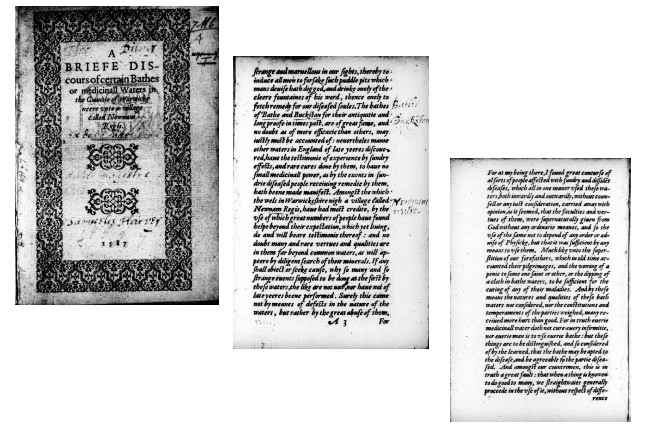
The renowned antiquarian William Camden (1551-1623) referenced Newnham Regis baths in his most notable work – Britannia – which was a topological and historical survey and report on all of Great Britain. His original words were in Latin, but the essence was translated into Old English thus:
Then Newenham Regis, that is, Kings Newenham, standing upon the other side of the river, where three fountains walme out of the ground streined, as it should seeme, through a veine of alum ; the water whereof carrying both taste and colour of milke, is reported to cure the stone ; certes, it procureth urine abundantly, green wounds it quickly closeth up and healeth, being drunke with salt it looseth, and with suger, bindeth the belly.
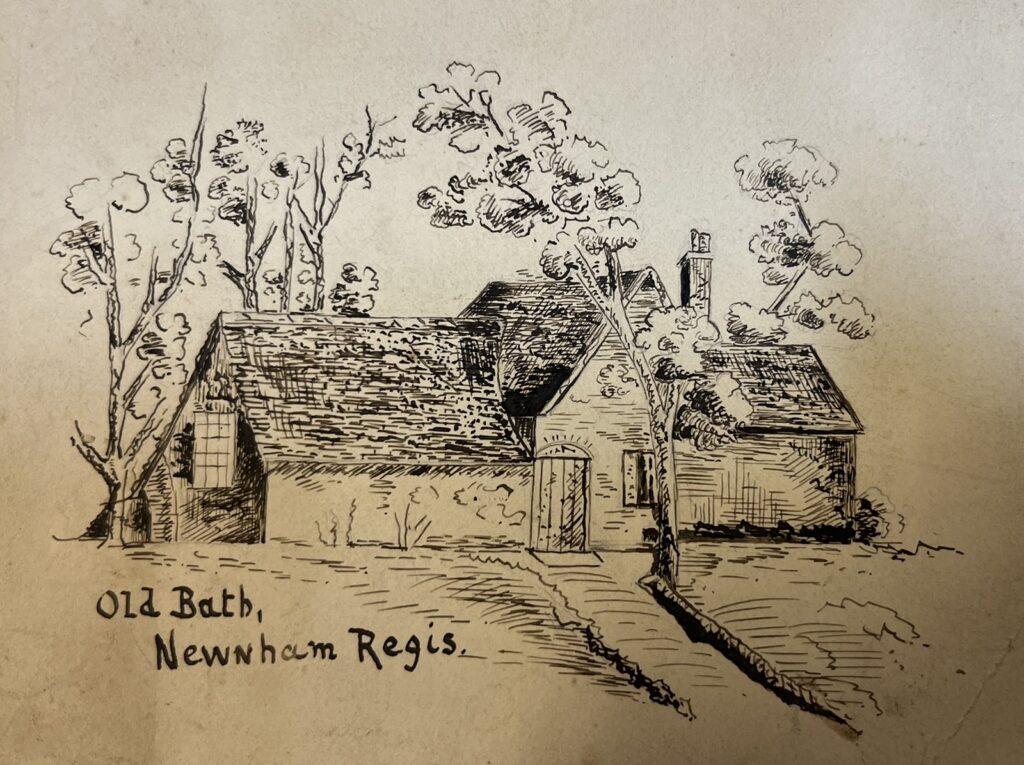
The wells were mentioned by several celebrities in the following centuries, and in 1815 (says Dr. Buckland) “two magnificent heads . and other bones of the Siberian rhinoceros and many large tusks and teeth of elephants, with some stags’ horns and bones of the ox and the horse were found in a bed of diluvium.” The baths were in use until the last century, a large one for swimming, small one for hot water bath, and a light foot bath. The dressing-rooms were converted into living rooms, whilst in the parlour the following inscription is to be seen on a pane of glass: “Rev. Edward Nason, M.A., Curate of Brinklow, August 15th.1784” They were in the possession of Lady Jane Scott. who composed the tune for the famous -song “Annie Laurie. “ Her husband Lord John Scott had restored the baths in 1857, and following his death three year later his wife kept the facility open for a while.
The baths were also referenced by local researcher Liz Parvin in her 2014 articles on Kings Newnham for the village magazine – here.
By 1918 the Baths were disused, but the site along with the Old Bath Cottage was part of the auction that year (Lot 10). They were also referenced in the description of the village at the start of the 1918 village auction catalogue, which noted “At one time a bath was in existence here, but probably the near proximity of Leamington Spa, with all its facilities for internal and external use of the waters there, caused this one to languish. When in use the water was said to be very cold indeed, similar in intensity to the famous “holy well” at Holywell, North Wales. The surroundings of the neighbourhood are ideal for making again “an old world inland watering place.””
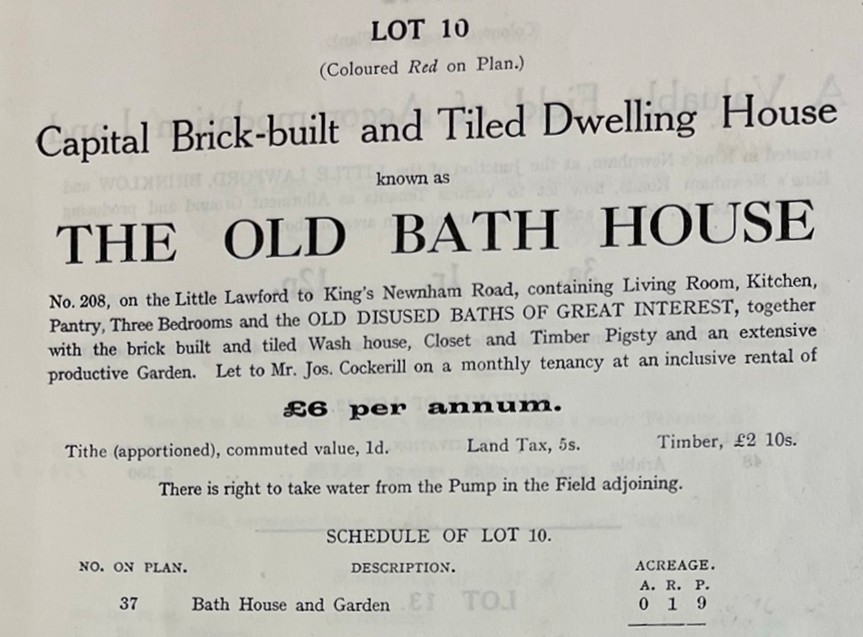
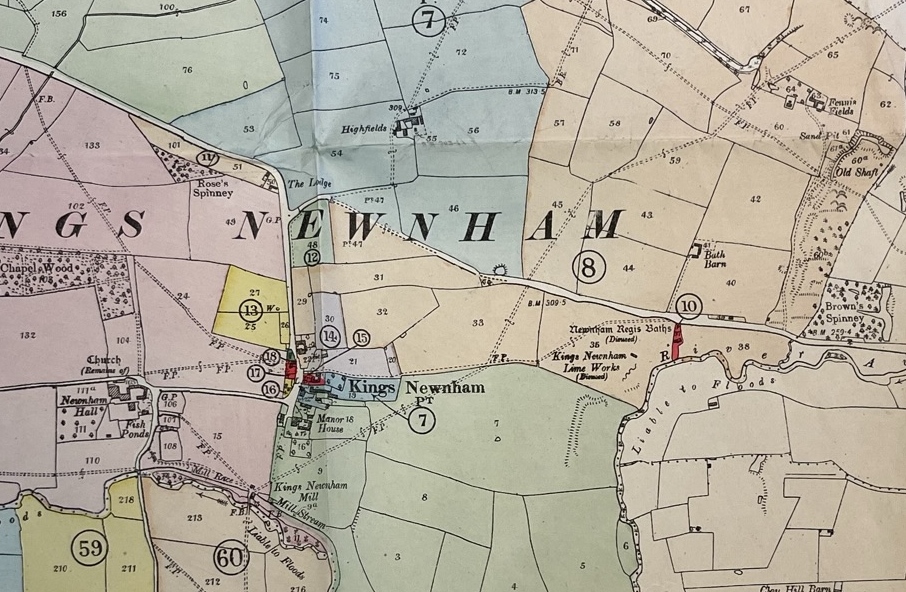
An article from the Coventry Evening Telegraph in 1942 has some additional insight into the location mentioned above.
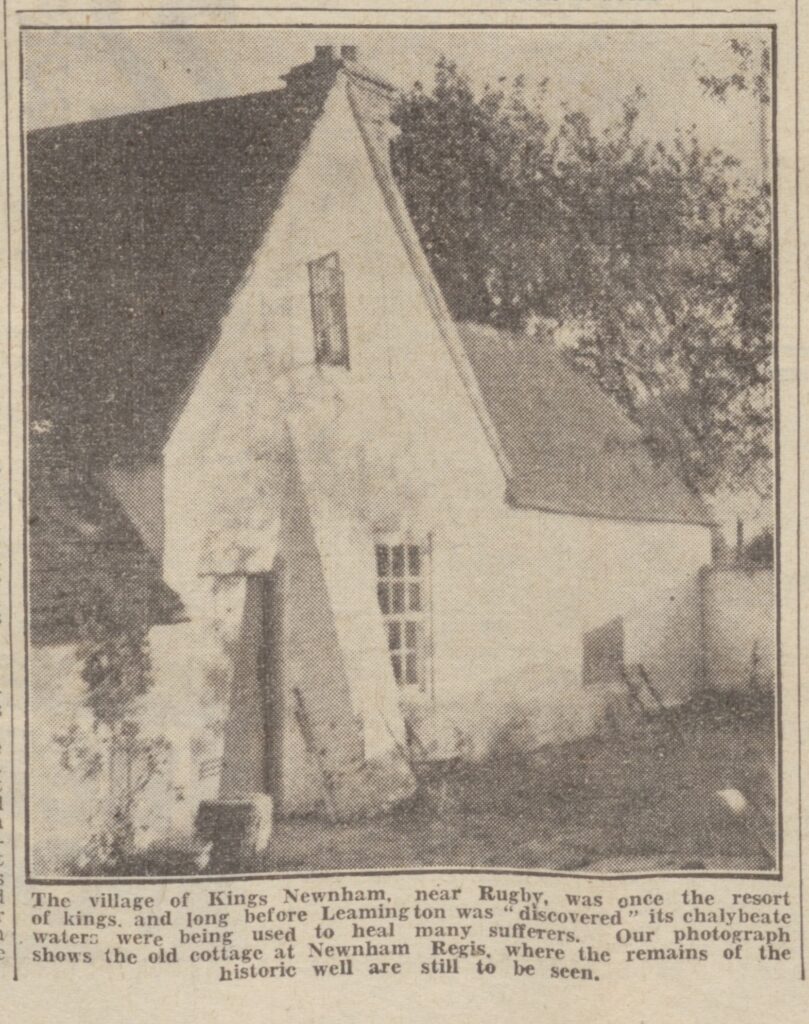
An ode about Newnham Well was published as far back as 1776 in the Coventry and Warwick Mercury – detailed here.
